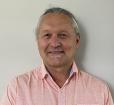A rare collection of traditional Aboriginal wooden objects in varying degrees of preservation found along a dry creek bed in South Australia have been dated to a period spanning 1650 to 1830 at the Centre for Accelerator Science at ANSTO.
High intensity X-ray beam provides insights into the activity of natural killer cells.

Lead Scientist, Micro-Computed Tomography beamline
Role at ANSTO
Dharawal Mural tells an ancient story. Aboriginal and Torres Strait Islander viewers are advised that webpage contains images of people who have died.
New three year study with UNSW for Cotton Research Development Corporation.
The Infrared microspectroscopy microscopes can record spectra from a range of different samples; from thin microtomed sections to polished blocks and embedded particles. This section highlights the types of samples that can be analysed using the IRM beamline
Sample environments, Data analysis and reduction on the Koala instrument.

Imaging Physiologist
Role at ANSTO
Snapshots of an unprecedented double element-hydrogen bond activation at a transition metal centre.

CMMS Client Support Officer
Grahame is an Electrical Engineer (BE(Hons)) and has a Master of Engineering Management (MEM)(MBA for people in a technical environment). He recently completed a Graduate Certificate in Machine Learning and Computer Vision.

Lead Scientist MEX Beamline
Role at ANSTO

Senior Instrument Scientist, Dingo
Role at ANSTO
Dr Joseph Bevitt is a senior instrument scientist on the Dingo radiograph/tomography/imaging station, and scientific coordinator for the Australian Centre for Neutron Scattering.

Instrument Scientist
Role at ANSTO
Dr Richard Mole is an instrument scientist co-responsible for the cold-neutron time-of-flight spectrometer PELICAN.

Science Research Leader
Role at ANSTO
Frequently asked questions about beamtime, accommodation and the user portal.
An international team of academic researchers led by Curtin University have provided a description of a new species of pterosaur, a flying reptile.
Study reveals that properties of polycrystalline materials can be derived from microscopic single crystal samples
Pagination









